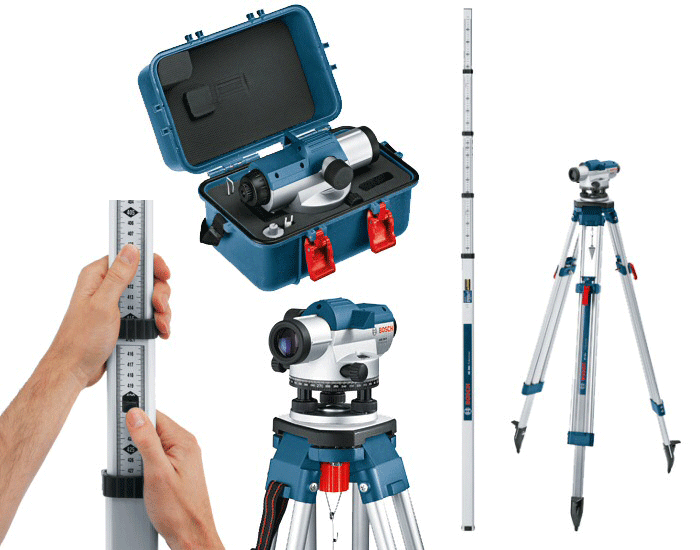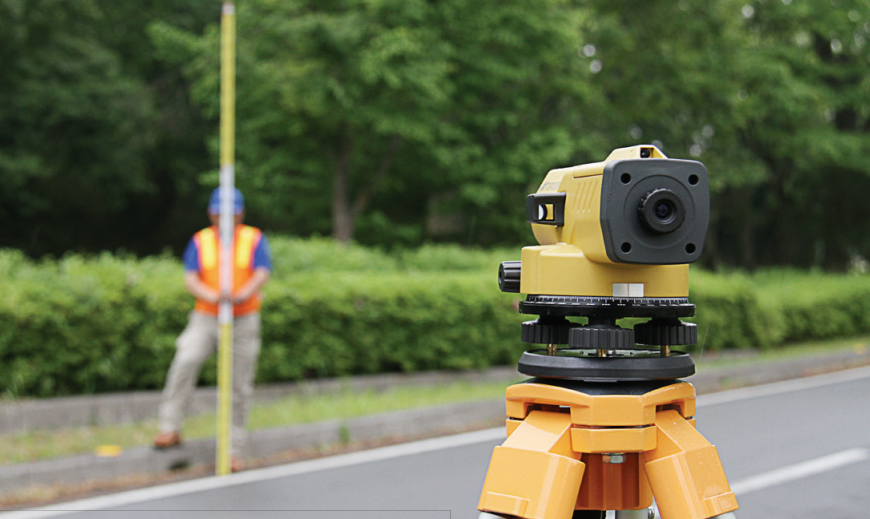Laser level
Structure and main functions of the Laser Level
The laser level operates by emitting laser beams in both horizontal and vertical directions, allowing users to easily determine balance points, straight lines, or right angles in their work.

This device is manufactured based on modern surveying technology, meeting high requirements for accuracy in various applications. A convenient feature of the laser level is its simple design, with lenses that are less prone to dust, reducing the need for frequent cleaning. In addition, the automatic compensator system is highly sensitive, supporting stable and precise measurement results during use.
Concept of the Laser Level
The laser level is used to support surveying, helping to determine elevation differences between points on the ground according to the principle of geometric leveling. A major advantage of this device lies in its simple setup, convenient portability when working on construction sites.
During use, users often appreciate the fast operation, wide measuring range, and accurate self-leveling mechanism. In addition, the compact yet extremely sturdy design makes it easy to move, suitable for many different surveying needs.
A laser level is usually composed of three main parts:

First is the sighting part, including the lens, objective, and eyepiece, combined with adjustment screws to help users easily observe and focus accurately.
Next is the leveling part. This includes adjustment screws, a circular level, and sometimes an additional tubular level. Depending on the model, the manufacturer may integrate mirrors, prisms, or suspended lenses to support faster and more stable focusing.
The final part is the tripod, which holds the device firmly on the terrain. The device usually comes with a leveling staff – a geometric leveling ruler with clear graduation marks. Depending on the design of each model, the staff may vary. When combined with the laser beam for sighting and measurement, users can read elevation values easily and accurately.
Practical applications of the laser level
Laser levels are now commonly seen in large construction projects and are widely applied in many other fields. In housing construction or interior projects, this device helps workers easily determine elevation, align planes, and install ceilings, floors, or door systems so that they are straight and even. In road and bridge works, the device supports measuring terrain differences, ensuring that asphalt surfaces or concrete pouring meet standards. This is also the group of applications where many engineers often choose Topcon laser levels for their stability and durability in large-scale construction environments.
In addition, in the mechanical industry or industrial equipment assembly, laser levels are used to align machine positions, saving time and reducing errors. For individuals working on personal projects, such as installing shelves, hanging pictures, or designing living spaces, this device is also a useful assistant.
It is the versatility in many practical situations that has made the laser level a familiar tool for engineers, contractors, and even DIY enthusiasts.
Recommended brands of laser levels trusted today
To choose a suitable laser level, users often pay attention to accuracy, durability, and convenience during operation. On the current market, reputable brands such as BOSCH, TOPCON with models like AT-B2, AT-B3A, and LEICA have all affirmed their position thanks to stable quality and advanced technology. At EMIN, products from these three brands are officially distributed, allowing customers to confidently select the right equipment for their needs, from household tasks to construction and surveying projects.
In addition, when using a level, there will be errors that new users often encounter. For more details, please refer to the following article: Common errors when using a level.
-
-
-
-
-
-
-
-
-
-
-
-
-
-
-
-
-
-
-
-
-
-
-
-